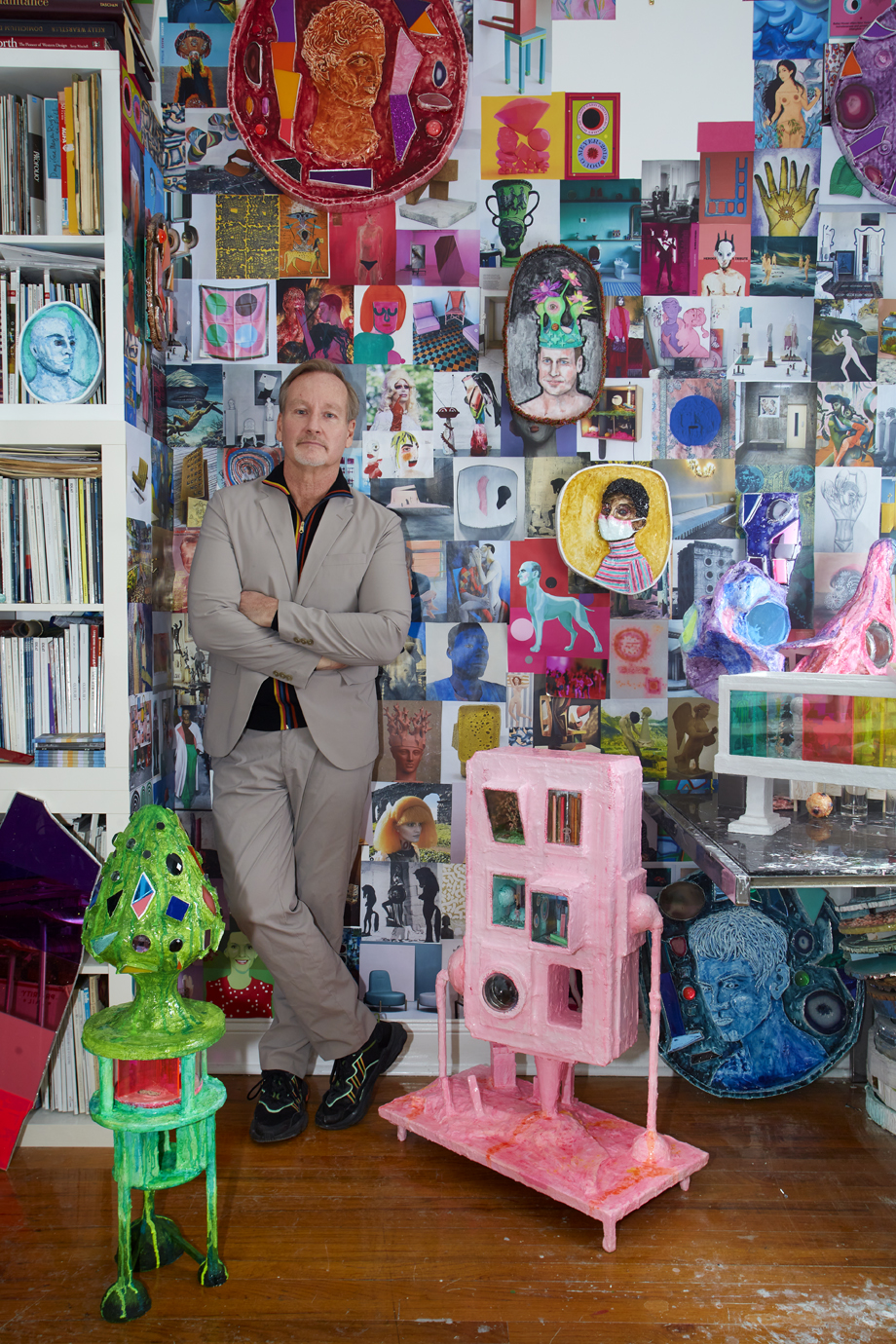
Doug Meyer spent much of 2020 thinking about the distant future. Last spring, cooped up in his apartment in Chelsea, he began producing a series of sculptures that tells the surreal story of an America that could be. At the time, New York City was entering a total lockdown. Meyer, navigating a new normal of solitude, gradually constructed his own community in miniature, creating scaled-down buildings with fanciful anatomies enhanced by jazzy color palettes. He called them “isolation bunkers.”
“I was kind of lost, in a way, and I just started making one of these bunkers and speculating what would be happening in five, 10, 15 years,” Meyer says. “I didn’t really know what it was going to lead to. But it grew as the pandemic grew.”
Using a mishmash of materials such as plexiglass, plaster, Lucite, and honeycomb board, he eventually dreamt up and realized 15 bunkers. They have distinct, beguiling architectures, from a bird-shaped shelter to a cool-hued Seussian structure on stilts with a fun-house interior of mirrors and crystals. Currently on view at Daniel Cooney Fine Art, the sculptures invite close observation: Visitors can peer through tiny windows and take in the otherworldly interiors, some of which are occupied by human figures. Much like Zillow surfing, cottagecore and Bridgerton, the futuristic bunkers feed a common desire for escapism that has grown over our year of collective isolation.
It takes little time to get lost in Meyer’s world. The series, titled “Wyldlands,” is more than a collection of sculptures; it encompasses an elaborate narrative of speculative fiction. Meyer, collaborating with his husband, has authored a future in which these bunkers exist: The year is 2037, and society continues to suffer from another global pandemic, this one more transmissible, more deadly and more divisive. In the United States, several states have seceded to form “the WestAmerica Confederation,” a place with universal healthcare, its own robust economy, and strict border controls. It is essentially, for better or for worse, a liberal bubble—a massive pod for the like-minded.
Within this confederation lies Wyldlands, a recreational park that has colonized the Sonoran Desert and provides isolation bunkers as sites of amusement. Meyer’s story, chronicled in the exhibition catalog in seven brisk chapters, describes it as a playground built in light of the “ongoing consumer confinement and boredom of much of the American population.” Run by a private-equity firm, Wyldlands is a place for elites to indulge without bounds; it offers access to a vineyard, a perfumery, a unique film festival and, of course, those fabulous bunkers. Unapologetically extravagant, Meyer’s sculptures reflect and revel in this unfiltered pleasure. Only at Wyldlands might someone find a building shaped like a plump, two-faced goldfish, its hollow belly framing a circular picture window—perfect for looking out and looking in.
Despite all this visual folly, the concept of a utopian oasis in a dystopian world is, for Meyer, not far-fetched. “When you start looking at the reality, I think this is a story that could happen,” he says. “The way this world and this country is going, I’m ready to move to WestAmerica. For me, it’s kind of a hopeful thing.”
Having the option to escape is, of course, a privilege. While “Wyldlands” represents one ideal commune, it also raises critical questions: For whom is this pleasure site built, and who has the resources to access it? As we, in 2021, cautiously anticipate less isolated futures, Meyer’s quixotic visions prompt us to consider building new worlds that are equitable as well as euphoric.
Craving more culture? Sign up to receive the Cultured newsletter, a biweekly guide to what’s new and what’s next in art, architecture, design and more.




